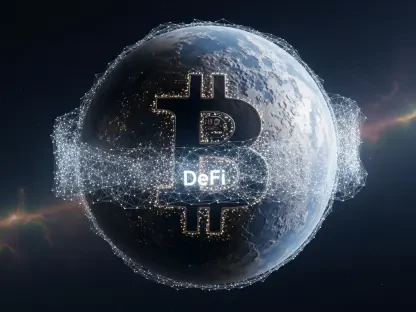Since their introduction in 2018, the Green Loan Principles (GLP) have become the cornerstone of the green loans market. These principles ensure that green loans, which are loan instruments intended exclusively for financing environmentally-focused projects, align with sustainable and ecological values. However, the lack of standardized documentation has led to inconsistencies in how these principles are incorporated into loan agreements. To address this, the Loan Market Association (LMA) has released two key documents: the Draft Provisions for Green Loans and the Green Loans Term Sheet.
The Foundation of Green Loan Principles
Use of Proceeds
The GLP mandates that funds from green loans must be directed exclusively towards environmentally beneficial projects. Eligible projects include initiatives focused on renewable energy, energy efficiency improvements, and pollution control measures. By ensuring that financial resources are used in a manner that supports environmental sustainability, the GLP establishes a robust framework for the allocation of green loan funds. This regulatory requirement fosters responsible investment in projects that have a tangible, positive impact on the environment.
Green loans play a crucial role in advancing global sustainability goals, and their proper use is vital for achieving significant environmental benefits. Projects such as wind farms, solar energy installations, and waste management systems are prime examples of initiatives that can be funded through green loans. By mandating the use of proceeds for such projects, the GLP helps channel financial resources toward activities that mitigate climate change, reduce greenhouse gas emissions, and promote a cleaner, more sustainable future.
Project Evaluation and Selection
Borrowers are required to clearly articulate their environmental sustainability objectives and demonstrate how their projects align with GLP categories. They must also identify and manage potential environmental and social risks. This meticulous evaluation process is essential for ensuring that the projects funded by green loans genuinely contribute to environmental goals. It provides a structured approach for scrutinizing project proposals, thereby enhancing the credibility and impact of green financing.
The thorough evaluation and selection process not only ensures alignment with GLP but also enhances the reputation of both lenders and borrowers. By adhering to these stringent criteria, borrowers can showcase their commitment to sustainability, attracting socially responsible investors. Moreover, lenders gain confidence in the efficacy of the funded projects, knowing that they are supporting initiatives that are rigorously vetted and aligned with global environmental standards.
Management of Proceeds
To uphold transparency and integrity, borrowers are required to track or segregate the proceeds of green loans in separate accounts. This practice helps in maintaining clear records of how the funds are utilized, ensuring that they are used for their intended purpose. By implementing stringent management protocols, the GLP ensures that green loan proceeds are not misallocated and that they deliver the desired environmental outcomes.
Effective management of proceeds is a cornerstone of the GLP framework, fostering trust and accountability between lenders and borrowers. Borrowers need to establish robust tracking systems to monitor fund allocation, enabling them to provide comprehensive reports on the use of proceeds. This level of transparency is crucial for demonstrating the legitimacy of green loans and maintaining the integrity of the green finance market.
Reporting Requirements
Maintaining up-to-date records of fund utilization and providing regular reports to lenders is vital. These reports should not only outline the flow of funds but also highlight the environmental impact of the projects financed by the loans. This transparency is essential for building trust between lenders and borrowers and ensuring that green loans contribute effectively to sustainability goals. Through systematic reporting, borrowers can communicate the tangible benefits of their projects, fostering a culture of accountability and responsible financing.
Regular reporting serves as a mechanism for continuous monitoring and assessment of green projects. By documenting the progress and outcomes, borrowers can provide lenders with verifiable data demonstrating the environmental impact of funded initiatives. This ongoing communication helps in identifying any deviations or challenges, enabling timely interventions and ensuring that the projects remain aligned with the stated sustainability objectives.
LMA’s Draft Provisions for Green Loans
Purpose Clause
The Draft Provisions introduce a new paragraph specifying the exact green project being financed or refinanced. In cases where a borrower has not identified specific projects prior to closing, a description of eligibility criteria or a Green Loan Framework should be provided. This ensures clarity and alignment with the GLP from the outset, establishing a clear understanding between lenders and borrowers about the intended use of funds.
By defining the purpose early in the agreement, the Draft Provisions eliminate ambiguity and provide a solid foundation for the loan structure. Borrowers must articulate their green project plans clearly, avoiding any vague or undefined objectives. This clear delineation of purpose aids lenders in assessing the viability and alignment of the projects with green standards, thus ensuring that only genuinely sustainable initiatives receive funding.
Management of Proceeds Clause
This clause mandates borrowers to furnish lenders with evidence necessary for tracking, monitoring, and evaluating how the green loan proceeds are utilized. This requirement enhances accountability and ensures that the funds are used as intended. By incorporating this provision, the Draft Provisions reinforce the critical aspect of transparency, enabling lenders to verify the proper management and deployment of loan proceeds.
The Management of Proceeds Clause is pivotal for maintaining the integrity of green financing. It obliges borrowers to establish concrete mechanisms for tracking fund utilization and to provide regular updates on the progress of funded projects. This ongoing scrutiny helps in maintaining the credibility of green loans, ensuring that the funds contribute to impactful environmental projects and deterring any misuse of financial resources.
New Representations
Borrowers must confirm that the information provided regarding green loans is true, complete, and accurate in all material respects. They must also confirm that the project selection process adheres to the required criteria and that policies and procedures exist for evaluating, selecting, and managing potential green projects and associated risks. These representations need to be reiterated by each borrower at the time of each loan utilization and upon the issuance of each Green Loan Report.
The inclusion of new representations significantly strengthens the green loan framework, emphasizing honesty, accuracy, and compliance. By making these confirmations, borrowers assure lenders of their commitment to the principles of transparency and responsibility. This recurring need for confirmation helps maintain consistent adherence to GLP standards throughout the loan term, fostering sustained alignment with environmental objectives.
Undertakings by Borrowers
Borrowers must provide information required by the lender for the allocation of proceeds, compliance with purpose and publicity clauses, and adherence to GLP. They are also obliged to notify the lender promptly if a project ceases to meet the eligibility criteria or violates GLP. This ensures ongoing compliance and transparency throughout the loan term, safeguarding the integrity of green financing.
These undertakings enforce a continuous commitment to the principles of green loans, ensuring that borrowers stay vigilant and proactive in maintaining compliance. By obligating borrowers to inform lenders of any changes or deviations, the provisions foster a culture of openness and accountability. This proactive approach helps in mitigating risks and addressing any issues promptly, ensuring that green loans remain effective instruments for funding sustainable projects.
Green Loan Report Requirements
An annual report must be provided, including a project description and its eligibility basis, confirmation of funds drawn and their application in accordance with the purpose clause, details on how the project aligns with GLP, and information on the environmental and social impact of the project. Additionally, the Green Loan Report should include a Verification Report from an external reviewer, verifying the information supplied. This external verification adds an extra layer of accountability.
The comprehensive reporting requirements set a high standard for transparency and verification in green financing. By requiring detailed reports and third-party verification, the Draft Provisions ensure that lenders receive accurate and reliable information about the funded projects. This thorough documentation helps in assessing the true impact of green loans, providing objective evidence of their contribution to sustainability goals.
De-Classification Mechanism
To prevent greenwashing, lenders can declassify loans if certain events occur, such as inaccurate representations or non-compliance with GLP. While declassification does not trigger a default event, breaches of purpose and publicity clauses can lead to default as per the standard terms of the facility agreement. This mechanism emphasizes maintaining transparency and integrity in labeling and publicizing loans as green.
The de-classification mechanism acts as a safeguard against misrepresentation and non-compliance, ensuring that only genuinely sustainable projects retain their green classification. By incorporating this mechanism, the Draft Provisions deter greenwashing and uphold the credibility of green loans. This focus on transparency and integrity helps in building confidence among investors and stakeholders, reinforcing the importance of adherence to green standards.
LMA Term Sheet
Purpose of Green Loan
The Green Loan Term Sheet published by the LMA supplements the Draft Provisions, providing a format for term sheet stage drafting that includes essential green loan characteristics fit for term sheets. This includes clearly defining the green project being financed, ensuring that all parties are on the same page from the beginning. By integrating these characteristics into the term sheet, the LMA enhances clarity and alignment between lenders and borrowers.
The term sheet serves as a preliminary agreement, outlining the key components of the green loan and setting the stage for detailed documentation. By incorporating clear definitions and specifications, the term sheet facilitates a mutual understanding of the project’s scope, objectives, and requirements. This early-stage alignment helps streamline subsequent negotiations and ensures consistent adherence to green loan standards.
Monitoring Process
The term sheet specifies the evidential requirements for lenders, including Green Loan Reports and related information. This ensures that lenders have the necessary information to monitor the use of proceeds and the environmental impact of the projects. By detailing these monitoring requirements, the term sheet reinforces the commitment to transparency and accountability throughout the loan term.
Effective monitoring is crucial for the success of green loans, providing lenders with the ability to track progress and verify outcomes. The specified requirements for Green Loan Reports enable lenders to assess the performance and impact of funded projects comprehensively. This continuous monitoring fosters a deeper understanding of the projects’ contributions to sustainability goals, ensuring that green loans deliver on their intended environmental benefits.
Green Representations
The term sheet stipulates necessary borrower confirmations, ensuring that borrowers are committed to adhering to the GLP and providing accurate information throughout the loan term. By requiring these confirmations, the term sheet reinforces the importance of honesty and transparency in green financing. Borrowers must affirm their adherence to the stipulated criteria and procedures, building a foundation of trust between involved parties.
Borrower confirmations serve as a crucial assurance for lenders, affirming the alignment of projects with GLP and the accuracy of provided information. These representations validate the legitimacy of the green loan, ensuring that borrowers remain accountable for their commitments. By embedding these confirmations in the term sheet, the LMA promotes consistent adherence to green standards, enhancing the reliability and credibility of green loans.
Green Undertakings
The term sheet outlines the obligations of borrowers under green loan agreements, ensuring that they comply with the GLP and provide the necessary information to lenders. These undertakings include commitments to transparency, accurate reporting, and adherence to environmental objectives. By detailing these obligations, the term sheet creates a structured framework for borrowers to follow, promoting responsible and sustainable financing practices.
Borrower undertakings form a critical component of the green loan agreement, outlining the specific actions and responsibilities required to maintain compliance with GLP. These obligations ensure that borrowers remain committed to their environmental goals and provide lenders with the necessary information to monitor progress. By defining these undertakings clearly, the term sheet fosters a disciplined and accountable approach to green financing.
Declassification Regime
The term sheet includes procedures and consequences for declassifying loans under non-compliance circumstances. This ensures that loans are only classified as green if they meet the stipulated criteria and remain in alignment with GLP. By implementing a declassification regime, the term sheet safeguards the integrity of green loans, preventing the misuse or misrepresentation of the green label.
The declassification regime is a vital tool for maintaining the credibility of green financing, ensuring that only genuinely sustainable projects qualify as green loans. By specifying the procedures and consequences for non-compliance, the term sheet deters greenwashing and promotes adherence to GLP. This focus on integrity helps build trust among investors and stakeholders, reinforcing the importance of transparency and accountability in green financing.
Conclusions and Final Thoughts
Introduced in 2018, the Green Loan Principles (GLP) have established themselves as the foundation of the green loans market. These principles ensure that green loans, which are financial instruments specifically designed to fund environmentally-focused projects, adhere to sustainable and ecological values. Despite their significance, the absence of standardized documentation has caused inconsistencies in how these principles are applied in loan agreements. To tackle this issue, the Loan Market Association (LMA) has issued two critical documents: the Draft Provisions for Green Loans and the Green Loans Term Sheet. These documents aim to bring uniformity and clarity to the implementation of GLP in loan agreements, thereby promoting consistency and transparency in the green loan market. By introducing these standard forms, the LMA hopes to make it easier for lenders and borrowers to align their financing activities with sustainability goals, ultimately supporting the growth of environmentally responsible lending practices.









